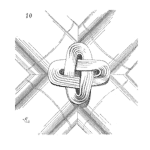
Lets start with a fresher on general Component Fatigue.
- Fatigue occurs when a material is subjected to repeated loading and unloading.
- When the loads are above a certain threshold, microscopic cracks will begin to form at a material’s surface.
- Cracks always begin in high stressed areas of a material.
- Eventually a crack will reach a critical size, and the structure will suddenly fracture.











